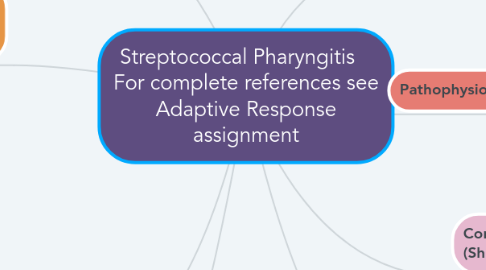Streptococcal Pharyngitis For complete references see Adaptive Response assignment
by Tara Verbeck


1. Epidemiology (Gerber MA et al., 2009).
1.1. Winter and Spring time
1.2. Affects male and female
1.3. Throat infection caused by gram-positive cocci that grow in chains
2. Clinical Manifestation (Shaikh, Swaminathan, & Hooper, 2012)
2.1. Fever
2.2. Sore throat
2.3. Painful swallowing
2.4. Swollen, tender lymph nodes in your neck
2.5. Tonsillar exudates
3. Treatment
3.1. Rest
3.2. Hydration
3.3. Antibiotics
3.3.1. A single injection of benzathine penicillin G 600,000 units IM for small children (< 27 kg) or 1.2 million units IM for children weighing ≥ 27 kg, adolescents, and adults usually suffices (Standford et al.,2012).
3.3.2. Penicillin V 500 mg (250 mg for children < 27 kg) orally every 12 hours (Standford et al.,2012).
3.3.3. Amoxicillin 50 mg/kg (maximum 1 g) once a day for 10 days (which is an effective substitute for penicillin V (Standford et al. 2012).
3.3.4. When penicillin and a beta-lactam are contraindicated, choices include; clindamycin ,erythromycin clarithromycin and azithromycin ( Standford,et al. 2012).
